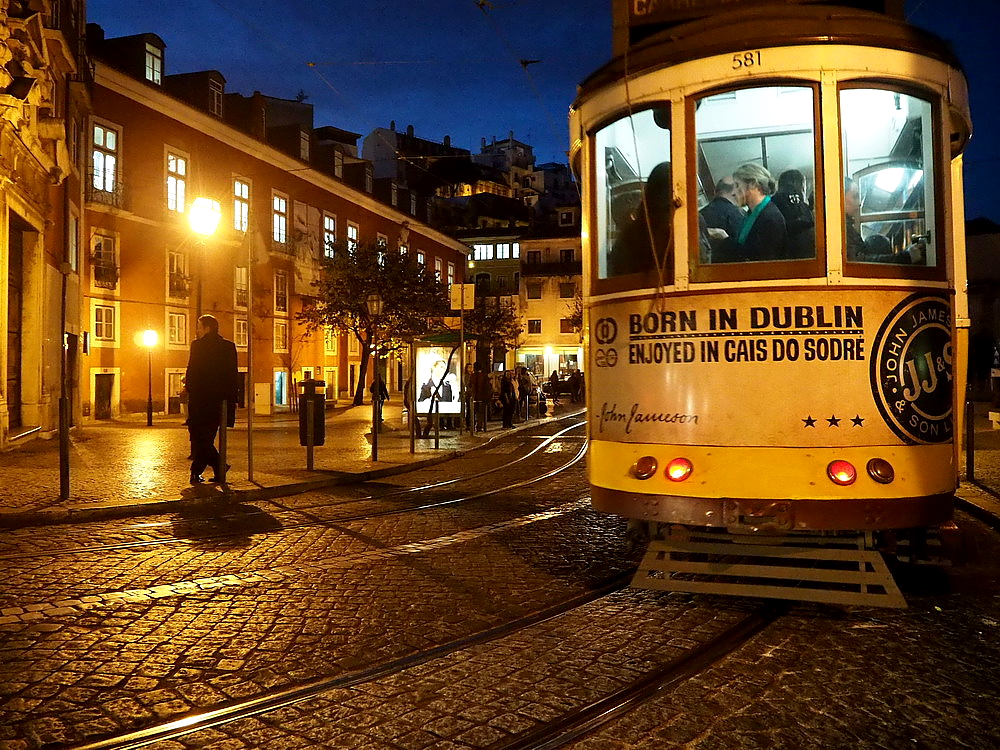I’ve always loved to travel in the low season.
In summer I just fully enjoy all the activities Budapest offers and it is an easy drive to reach a lake for swimming. It is the long and dark winter when my feet start itching and I am longing for sunny places, preferably in Asia or Africa. This year, however, because of a long journey to America in the summer, only a cheaper trip fit my budget to escape the winter. So I headed to Portugal.
During my usual detailed planning I soon realized that two weeks were not enough for all the sights I would definitely want to see in Portugal. Therefore, I decided to split the country into two and this time concentrate on the sights near and south of Lisbon, and find another time for a Porto-based trip.
So I spent some days in Lisbon, then travelled south to the sea, and later explored some charming little towns in the eastern region, around Evora. Finally, I paid a visit to the world heritage sites east of the capital up to Coimbra.
Cobblestones, trams, tiles and fado
Lisbon instantly sweeps you off your feet. It’s a place where not the individual sights are interesting but the town as a whole, the atmosphere itself.
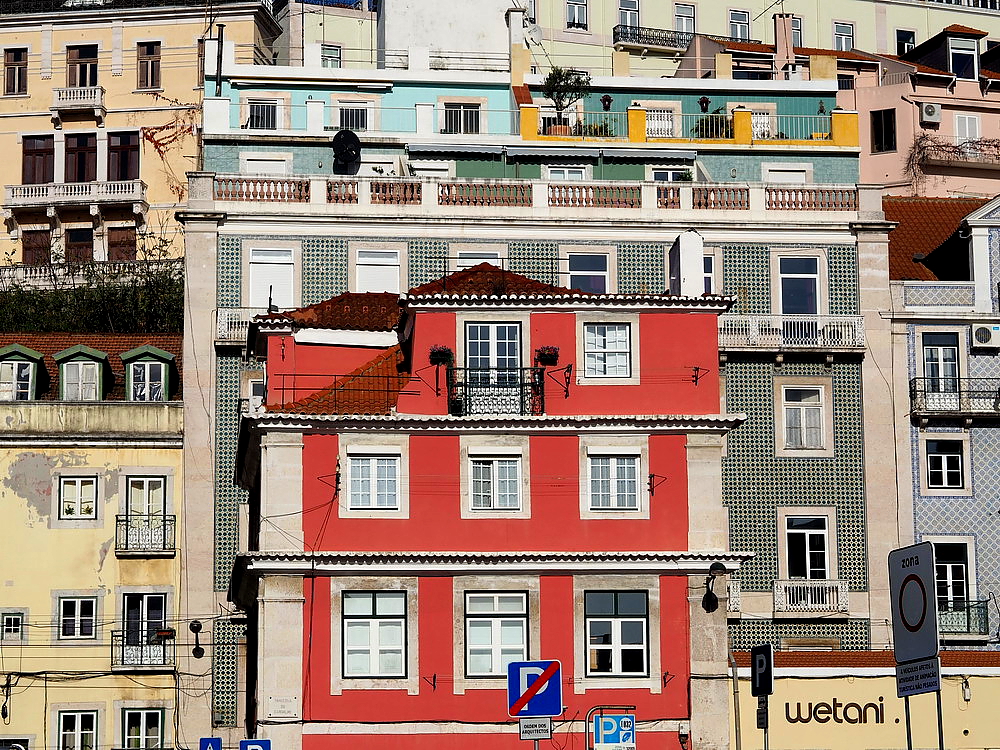
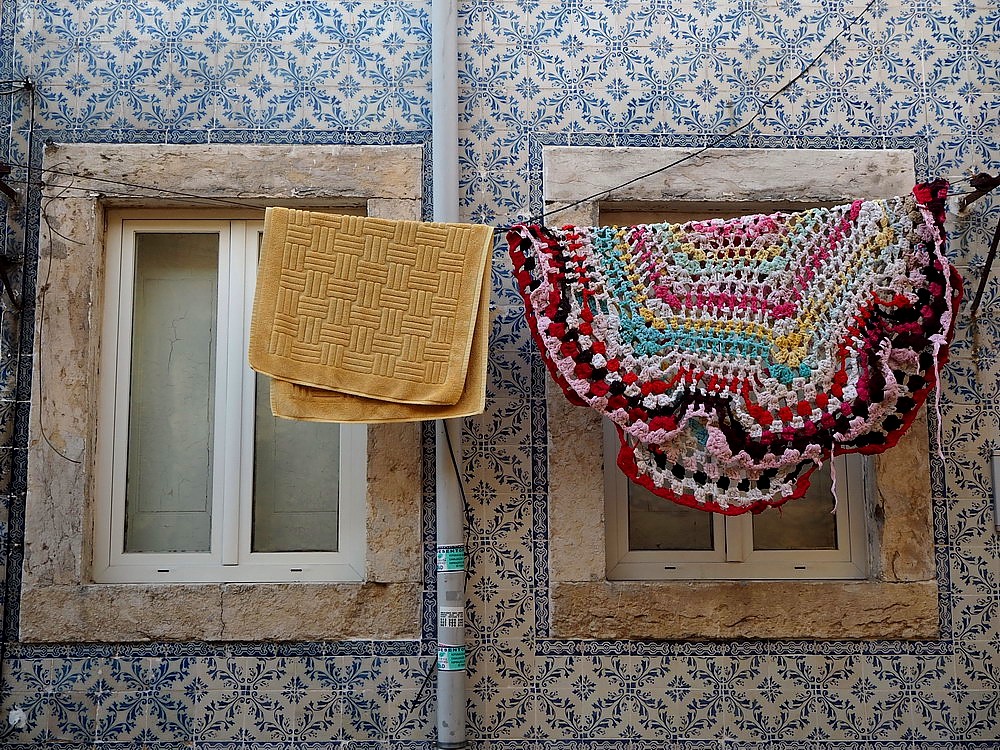
Most of all, I enjoyed wandering aimlessly around the sweet little narrow, cobble-stoned streets. I loved the painted tiles, the trams climbing the steep streets, the sound of sad fado songs coming from the restaurants in the evenings.
At sunset I climbed to some lookout towers. The one called Miradouro da Senhora do Monte is the favorite of both the locals and the tourists. The crowds were biggest here, but I reckon the view is not the best. My favorite one became the Santa Luzia viewpoint, despite the fact that in only a few minutes, two pickpockets wanted to reach into my purse, obviously members of the same gang.
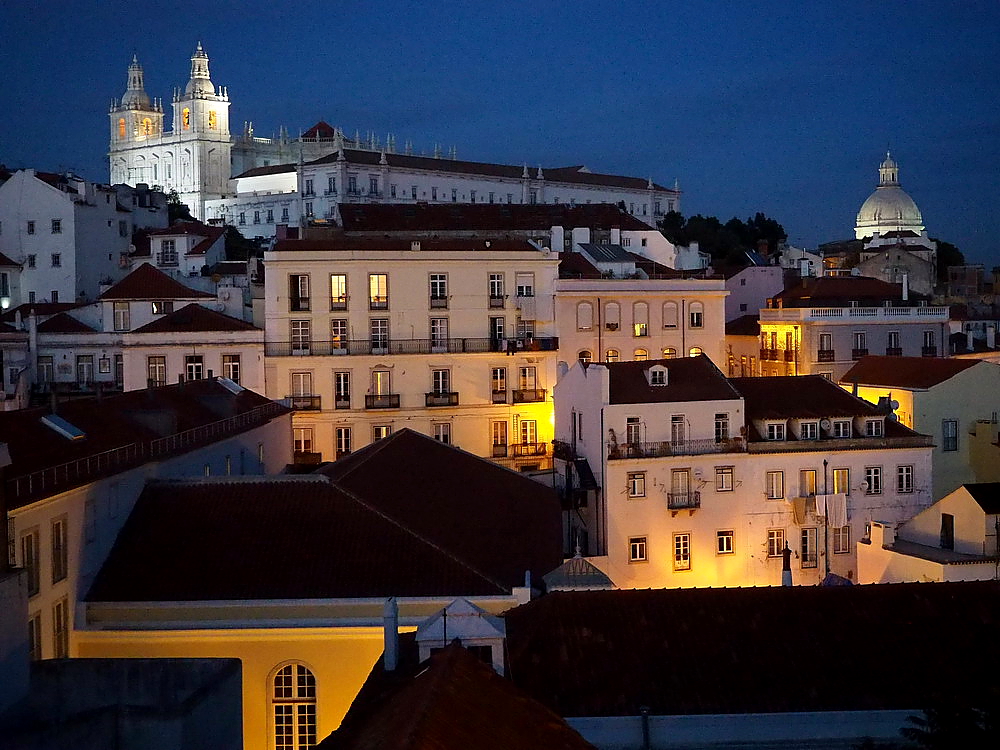
Although the city was swarming with tourists in the first two weeks of December and the legendary tram no. 28 was always crowded, I found some notable places almost empty. I was strolling alone in the Sao Vicente de Fora church, with its cloisters containing painted tiles depicting La Fontaine’s. The town’s tile museum was totally empty as well, although these beautiful glazed tiles or azulejos are of iconic importance in Lisboa.
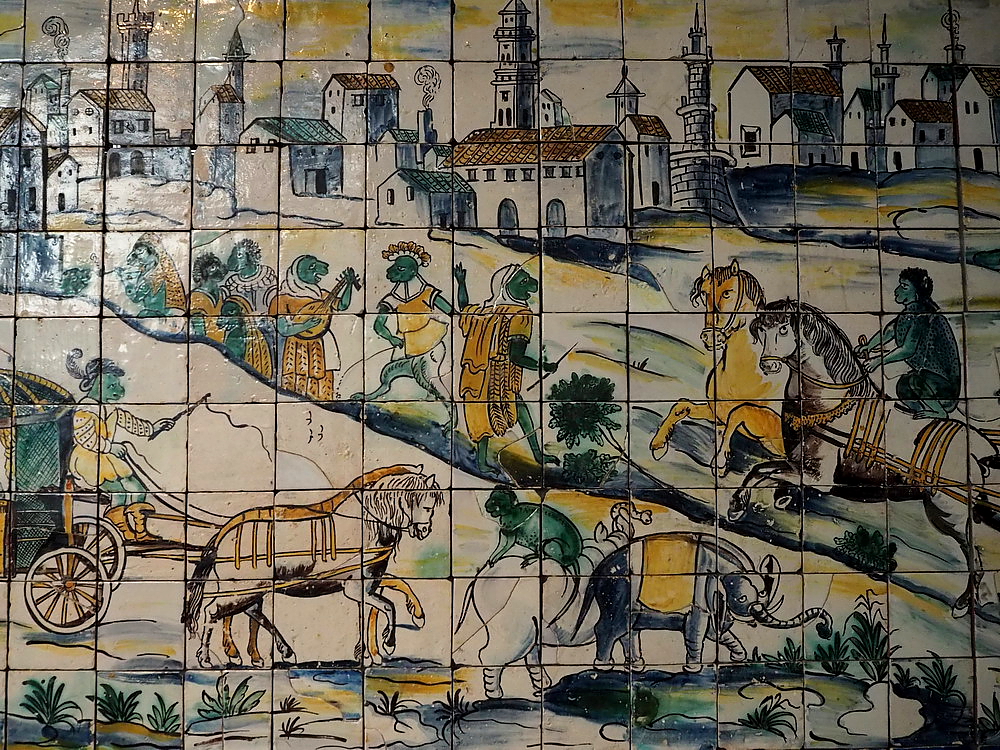
A 120 year-old doll on the operating table
The most memorable experience was the doll hospital, which opened in 1830 and has been functioning since then in the same tiny store. Look for the entrance on the Praca da Figueira Square. After buying the two euro ticket you can enter the hospital through the rear door.
Approximately a hundred dolls are repaired here every year. The majority of them are Portuguese, but “patients” are often sent from abroad as well. They heal not only dolls, but small statues of saints as well.
The first room is the ward itself, the dolls lying here on the shelves. There are notes attached to them describing their illnesses. Diagnosis is established by two nurses working in the shop downstairs. Next to the ward there are two doctors’ offices with two ladies working in each, so the total number of employees is 6 people altogether.
In relatively new dolls, for which there are parts available in stock, they simply replace the broken part. They have a fantastic collection of heads, arms, eyes and hair in the neat little doctor’s cabinets. Once in a while 50- or 100-year old dolls arrive, for which no spare parts are available anymore, so heads, arms, and everything else need to be created here.
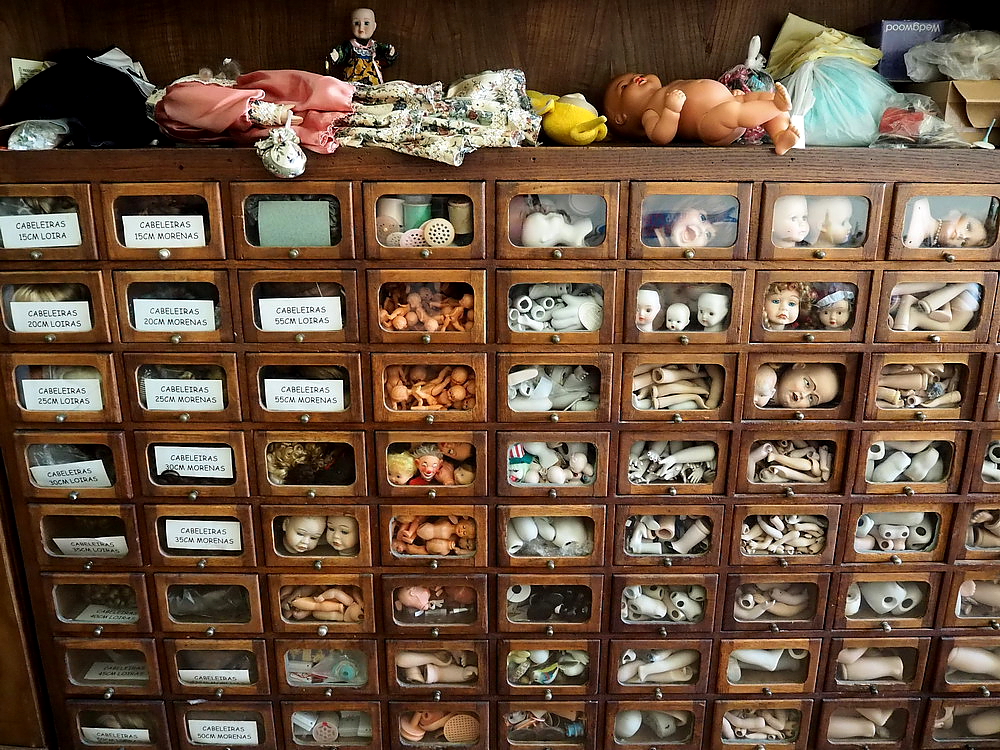
At the time of my visit, a 120-year-old doll was lying on one of the doctor’s tables with a broken head. One of the eyes was misplaced but not missing, unlike a big part of the head. Luckily the doctor didn’t find it difficult to do plastic surgery.
When I left, it made me smile to see the ambulance, a little basket with a red cross on it, in the corridor. I glanced into the attached tiny museum of old dolls as well.
The graffiti tour was a special event as well. There are numerous wall paintings in town, not only illegal ones but also a lot made to order. The biggest project of this kind was illustrating a parking lot, where every floor was painted by different artists. They were chosen by tender and received a decent wage for their work.
At the entrance of the parking lot, a photo and brief biography introduces the graffiti artists, who, according to our tour guide, are just as big local stars as some musicians.
The mystery of the Belém cream cake
After exploring the old town of Lisboa, two nearby villages, Belém and Sintra were the next in line. It is easiest to reach Belém by tram, Sintra by train. The Lisboa Card is valid for both.
It is a good idea to arrive at the splendid Belém monastery as early as possible. At around 10 in the morning I was wandering around the scenic cloister in a peaceful silence and I could take photos without visitors. After an hour or so, there was a winding queue in front of the ticket office.
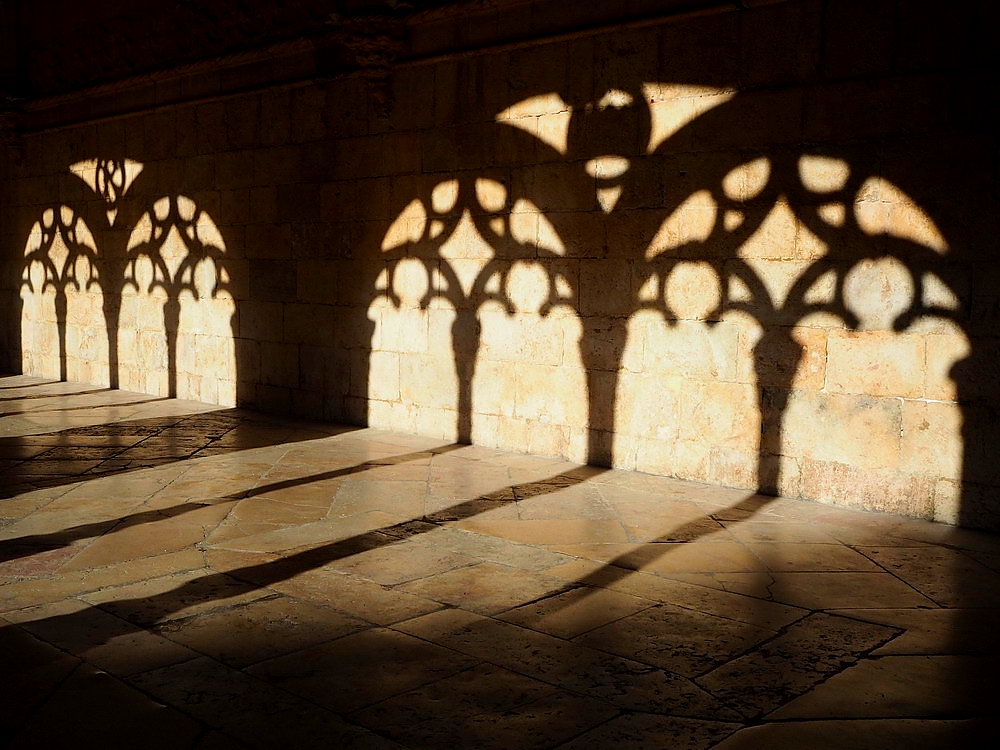
The monastery was built by Manuel I to commemorate Vasco de Gama’s discovery of the sea route tos India. Once he hadstarted such a large-scale construction work, he decided that this would be his and his offspring’s burial place as well. Works started in 1502 and lasted until the end of the century.
Since this is one of the most significant creations of the Manuel style, named after the architect, it was given a world heritage site status – so is a “must-see” for all UNESCO sight hunters.
The benefit of arriving early is being able to beat the crowds not only in the monastery, but also in the confectionery. After visiting the church everyone heads here – and no wonder why. The Belém dessert, called pastéis de Belém is simply heavenly and can only be tasted here. Because of trademark issues, similar cakes sold in other parts of the country are called pastel de nata.
After some cakes, I talked with an employee of the confectionery. I immediately inquired about the recipe with an innocent face, and he answered with laughter. The recipe of the handmade cream cakes, in use since 1873, is a secret that rivals that of the Coca-Cola.
The recipe is kept in a safe deposit box, known to nobody but four people, the owner and the three head chefs. The four initiates of the secret recipe are not allowed travel together, or eat the same meal in the same restaurant, lest due to some very unfortunate accident they take the invaluable knowledge to the grave with them.
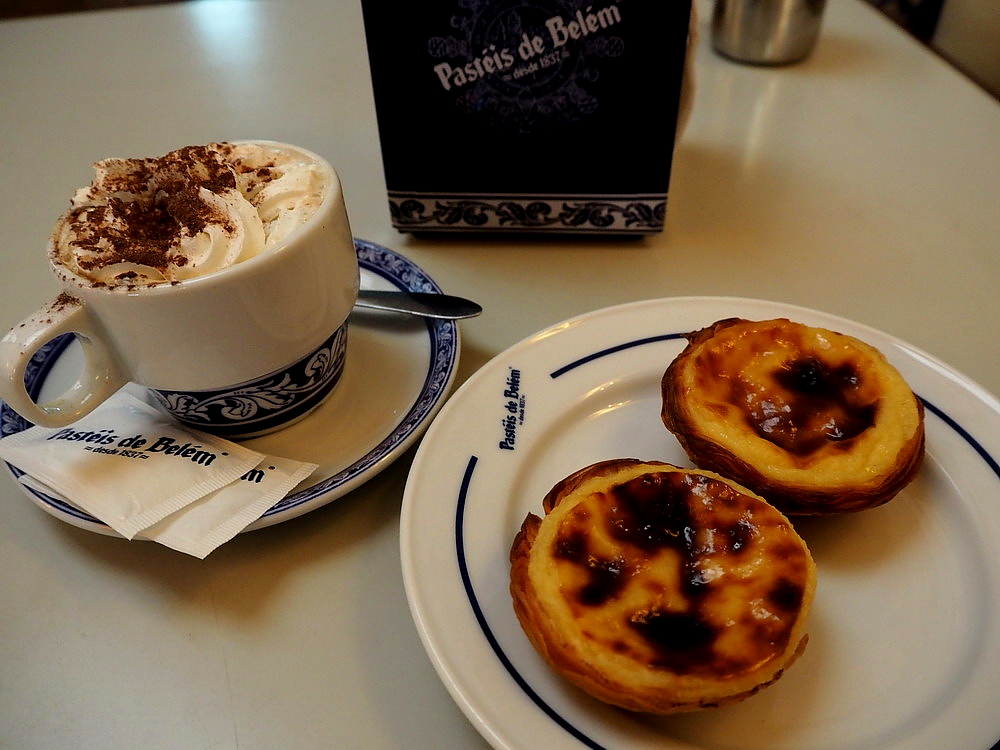
Sceptics could say that all of this is a publicity stunt to enhance curiosity. But after all, besides the outstanding product and the nice hospitality, good marketing is also among the ingredients of success. It is a fact that due to heavy traffic (the shop is open every day of the year and sells an average of 25 thousand cupcakes daily) cakes are always served fresh and still warm to the customers, and as for the staff, they are smiling, kind and polite people.
Wonderful palaces with crowds – and just for me
Another day trip that is worth taking from the capital city is to the palaces in Sintra. You can reach the three palaces close to the railway station by bus no 434 with a daily ticket for 5 euros, while the palaces further down the road can be visited by bus no 435.
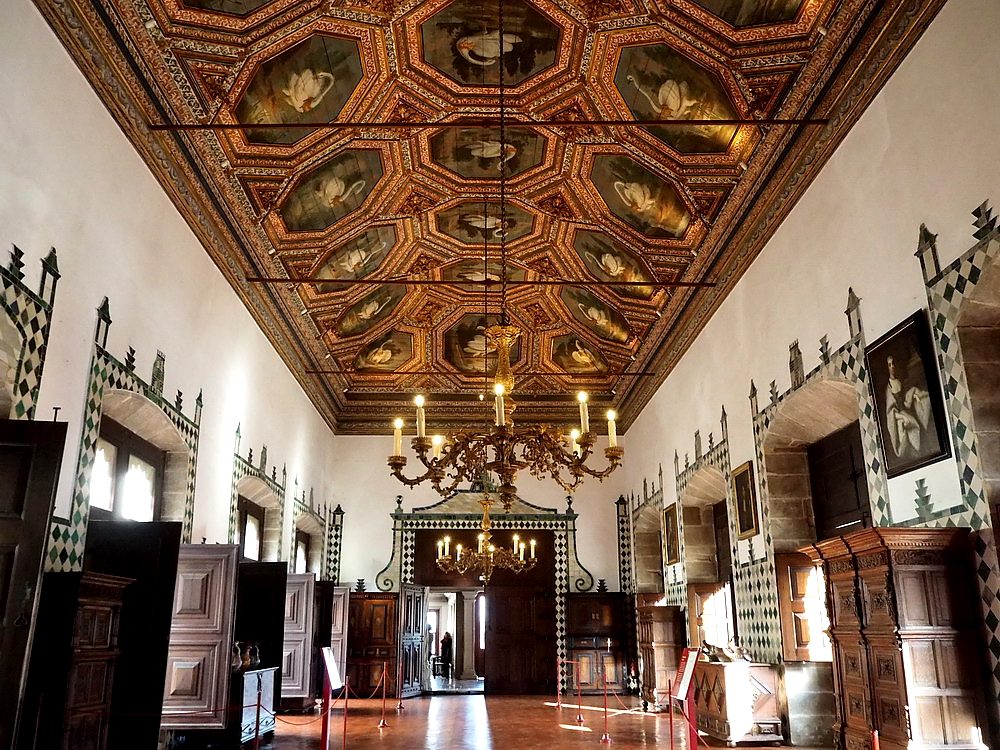
The three most popular and busy ones are the royal palace (Palácio Nacional de Sintra) in the middle of the main square, the Moorish Castle and the Pena Palace. I had visited these during a previous trip, so this time I focused on the further ones, the Regaleira and the Monserrate Palace.
Regaleira is most famous not for the castle itself but rather for its zigzagged garden. You can wander around fountains and romantic stone benches, climb into secret passageways and dark, underground tunnels, and move your way through winding paths and spiral staircases of narrow towers.
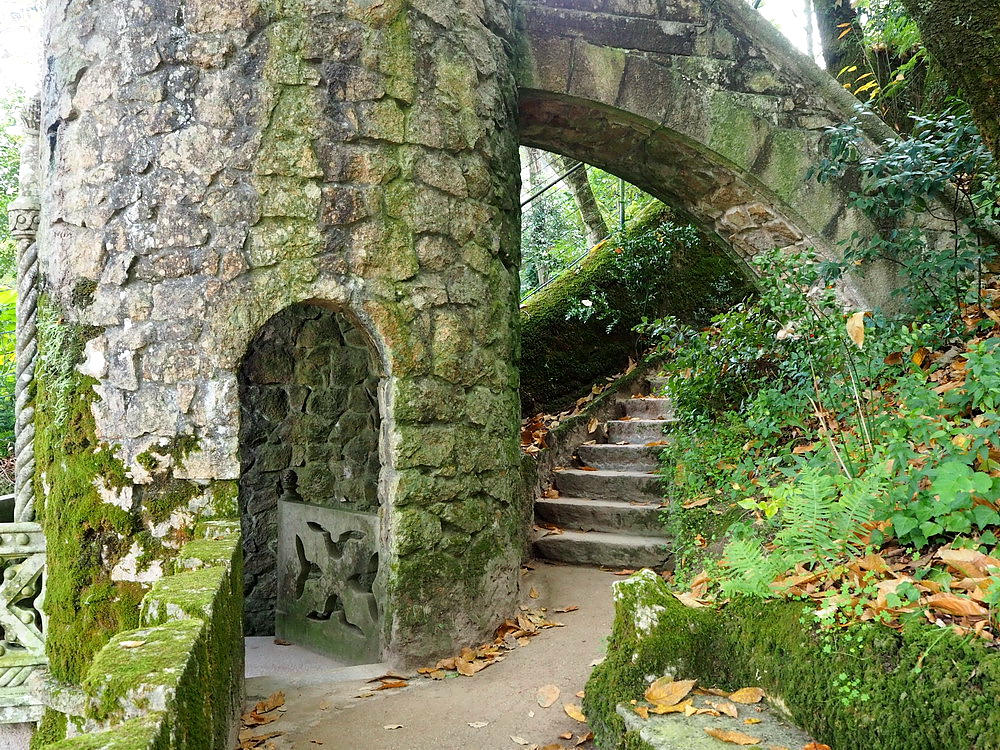
It would be mystical indeed, if it weren’t for the hundreds of loud tourists taking their selfies and recomposing group shots in every corner. They didn’t even look around, but were only interested in taking some pictures. I guess if I had asked them 10 minutes later, if they had had their photos taken in front of a fountain or an elephant, they wouldn’t have remembered.
The Monserrate Palace is only a few minutes from here by bus. I have no clue why so few tourists continue their trip to here. So I could marvel at the charming, almost lace-like little building and the wonderful park surrounding it in pleasantly peaceful silence.
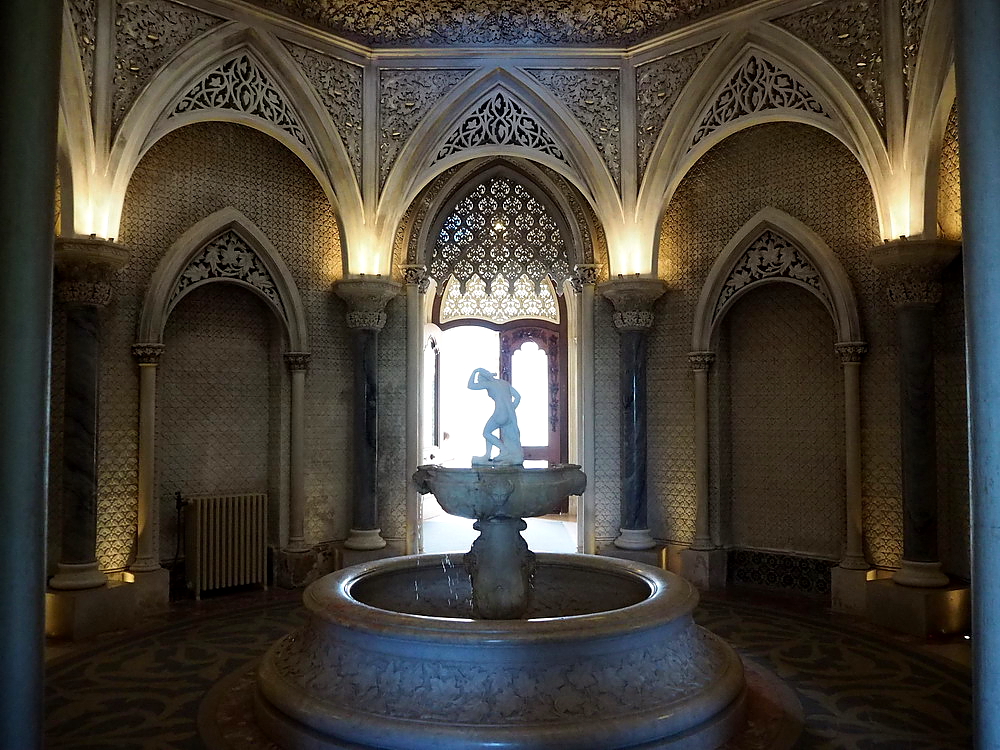
To visit the remaining two castles in the neighborhood it’s worth renting a car. The former Capuchin monastery is a spooky, deserted, ruined building complex hidden among enormous rock formations in the forest. I’m not sure when it was scarier, when I thought I was alone or when, in one of the dim-lit cells I spotted a visitor sitting in silence. After I had overcome my shock, we talked a bit. The young man lives in the neighborhood and often comes here for a quiet time and to meditate.
The huge Queluz Palace, alive with pink and light blue baby colors, was also deserted. In the amazing great hall there wasn’t a single visitor. This is when you realize how great it is to travel in the low season.

Summer picnic instead of Christmas spirit
I spent the next few days in the Algarve region, travelling by the sea. Although it was too cold to bathe, in December it is a pleasure itself to walk around in a light cardigan.
Prices are pretty reasonable at this time of the year. One can get a comfortable hotel room for as little as 20 euros, and renting a car costs only 5 euros a day. The method of pricing, however, reminded me of the budget airlines. The basic cost is low, but this is topped by almost 20 euros insurance, and a few extra euros for the toll (these are not compulsory, though).
It was pleasant to explore the sleepy little towns and experience a totally different way of preparing for Christmas. On the main squares surrounded by bright orange trees in 18-20 degrees, not so much mulled wine was consumed, but the bouncy castle was a great hit and the atmosphere reminded me of a May picnic instead. The door and window frames of the snow-white houses of the villages are painted in vibrant colors everywhere and they bring joy even in the greyest weather.

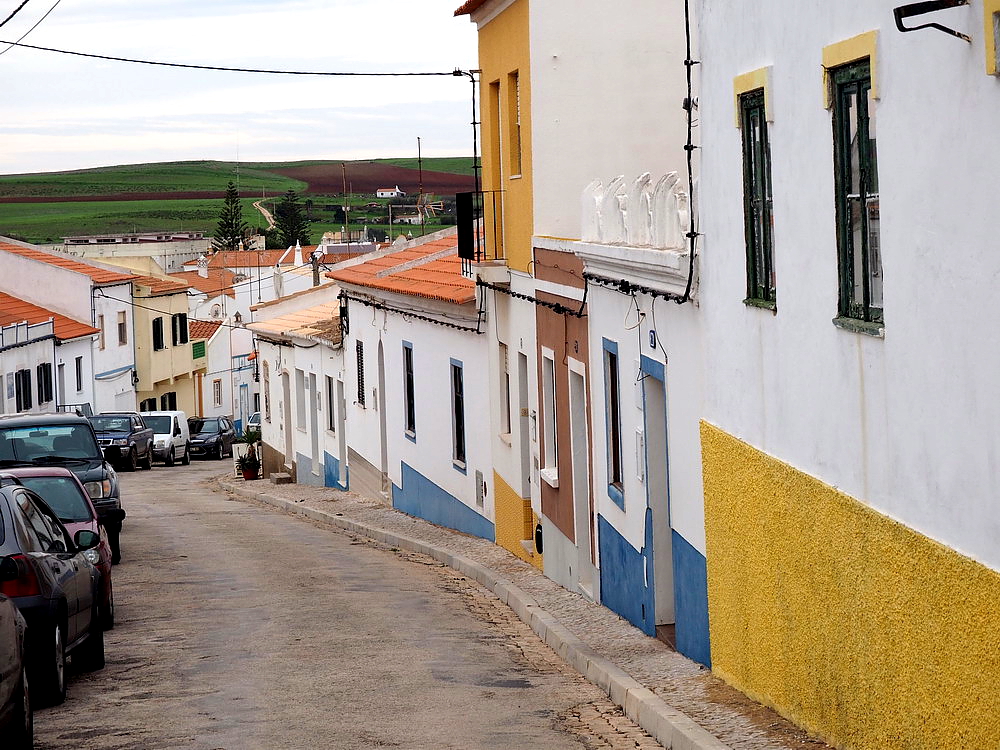
Evora and the eastern fortress towns
I headed to Evora from here, to visit the fortress towns of the eastern region. Evora is an interesting mixture of ancient history and lively present. Although it has the second largest number of monuments in the country (after Lisbon), it has a very energetic, modern feel.
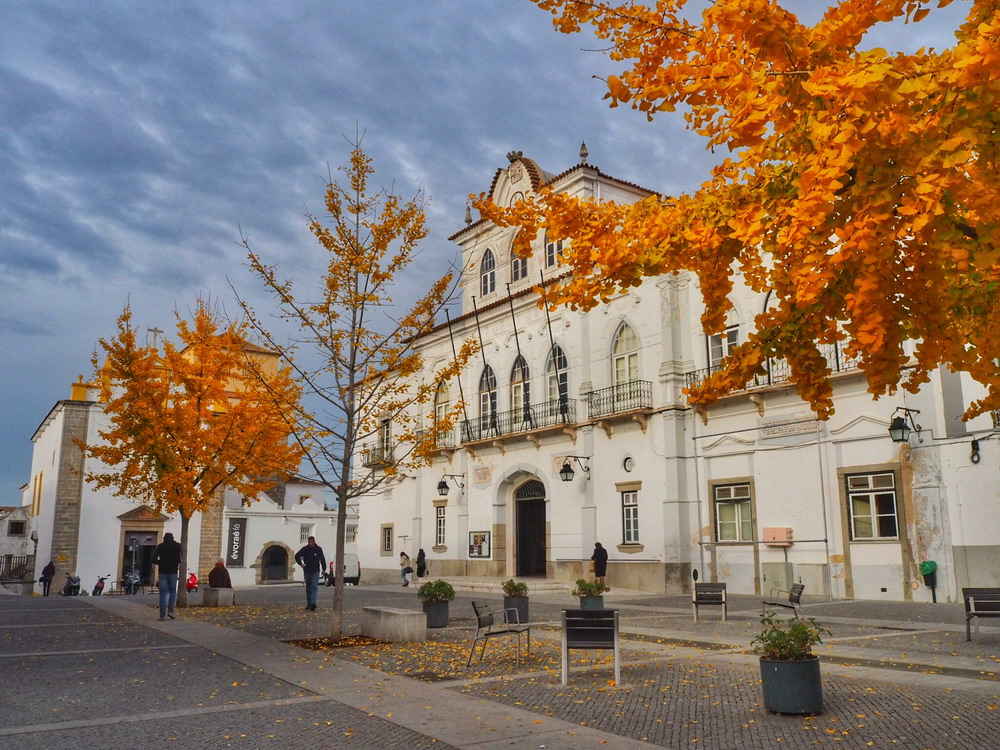
I took a daytrip to Monsaraz, where the nativity scene was not limited to a small manger, but life-size figures were placed all over town. It was a bit spooky but definitely different. As the town aspires to UNESCO status, all modern developments, such as satellite dishes, are hidden from the view. Luckily buses cannot squeeze through the town gate, so the traffic is mainly pedestrian in the cobbled streets.
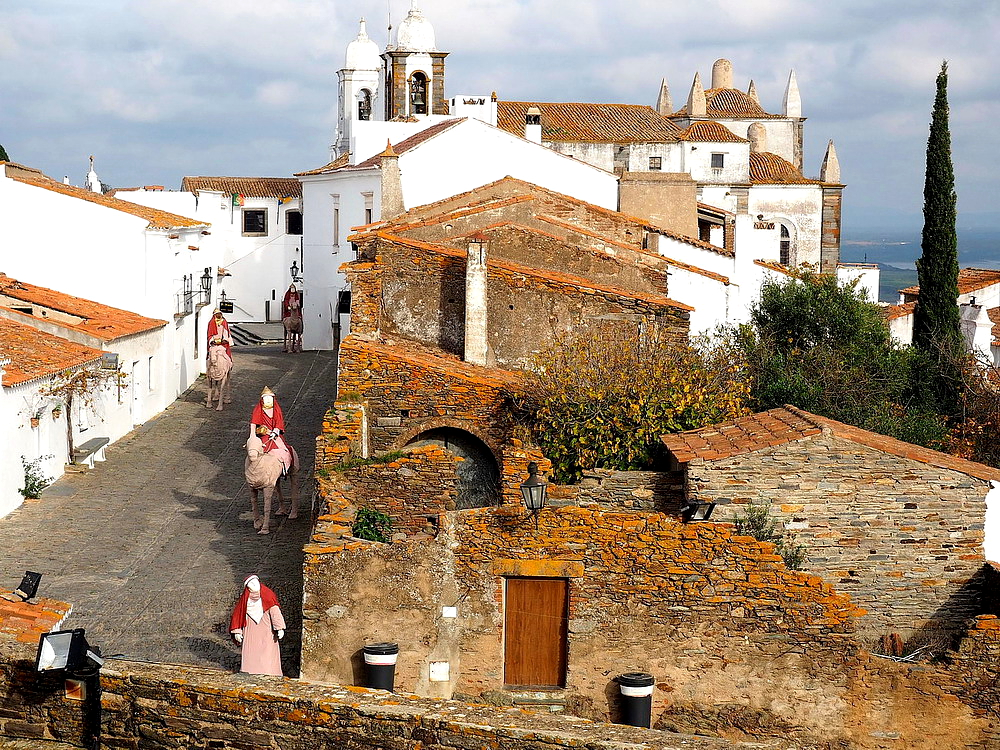
I had seen plenty of images of Monsanto online, but had to see it with my own eyes to believe it was real. The village is built on rocks weighing several hundred tons. Having visiting it on a rainy weekday, the streets were deserted and I truly felt in a fairytale.


Marvao is another little gem with hardly any visitors.

Coimbra is a lively university town and I was drawn there to see its library. It has survived many wars and was never destroyed by fire, so you can see the wonderful bookshelves in original condition. The university employs bats to keep the space free of beetles.

After paying compulsory visits to the trio of wonderful little towns (Alcobaca, Batalha and Obidos), I ended my tour at Cabo de Roca, the westernmost point of the continent. Mesmerized, I watched the wild waves of the ocean before saying goodbye to this friendly and cheerful country and catching my flight.

